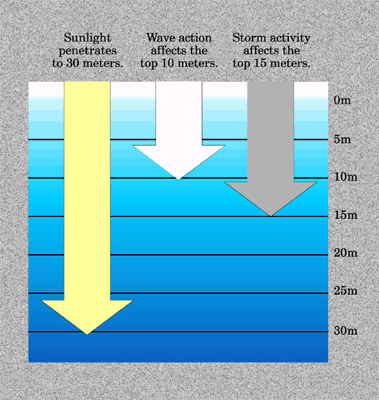
 How Deep Was the Water?
How Deep Was the Water?
During the Ordovician, Illinois was part of an ocean-covered platform. It stretched from the ancient Taconic Mountains, in what is now Pennsylvania and New York, to the Transcontinental Arch—an uplifted band of Precambrian rocks that ran from Minnesota to Colorado. The water in this area was probably no more than 61 meters (200 ft.) deep, and in most places much less.
At the Changes Institute we studied a fossil assemblage to help us reconstruct this habitat. The types of fossils and their conditions provided clues to the environment.
The fossil assemblage included:
Based on what we know about marine environments, can you determine how deep the water was when these animals were living?
Less than 30 m. (98 ft.) Algae and coral require sunlight for growth. Their presence indicates the water was shallow enough to allow the light to penetrate.
Greater than 10 m. (33 ft.) Presence of abundant delicate bryozoan colonie indicate a depth where wave activity normally did not penetrate.
But less than 15 m. (49 ft.) Overturned coral and algae colonies.
Conclusion: The water depth was between 10 and 15 meters (33 and 49 ft.)